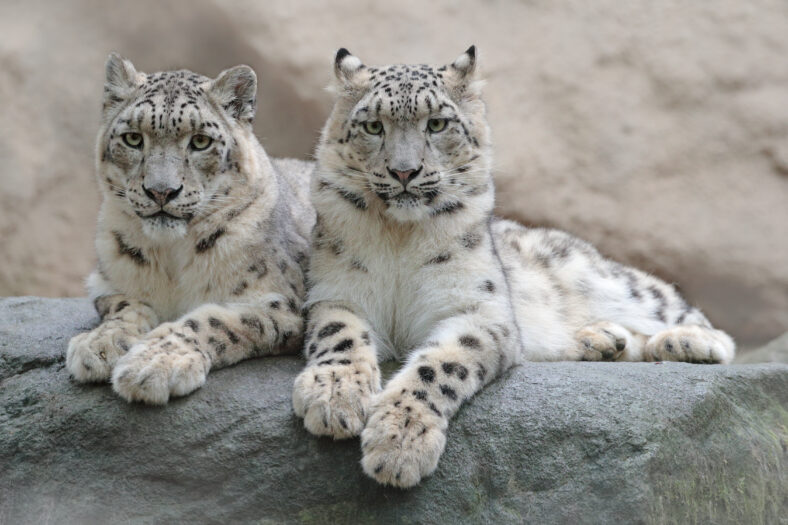Mysteries Surrounding Snow Leopard Evolution Have Been Unraveled Thanks To These Fossils

For the first time, a team of researchers has identified the fossils of snow leopards. The discovery has helped them trace the evolutionary history of the species and hypothesize how it went from living in the Tibetan plateau to the Iberian Peninsula.
The study suggests that snow leopards (Panthera uncia) prefer rocky terrain and cold climates over high altitudes, a fact that can aid in the protection of this animal.
Snow leopards are in danger of dying out, with only about 4,000 specimens left on Earth. They live at high altitudes, more than 6,500 feet above sea level, mainly in the Himalayan mountains.
Until now, the correlation between their unique traits, their adaptation to the Tibetan plateau, and their evolutionary history has remained largely unexplored due to the lack of fossil records in Tibet and nearby regions.
The research team reviewed a large number of samples of the common leopard (Panthera pardus) from Europe and Asia.
They identified five snow leopard fossils. The records are from China, France, and Portugal and they date back one million years ago.
The data allowed the team to trace the evolutionary and ecological history of the species during the Quaternary period. They found that snow leopards differ from their common relatives in many ways.
Common leopards are built to hunt agile, fast-moving prey in partially forested regions, while snow leopards evolved to have domed skulls, larger teeth, and stronger jaws and paws to thrive in rugged mountain landscapes and take down strong, muscular prey like mountain goats.
Their survival in those remote habitats also hinged on other major adaptations, such as enhanced binocular vision, a larger cranial structure for better hearing, powerful limbs to navigate steep, rocky terrain, and a long tail for balance.

Sign up for Chip Chick’s newsletter and get stories like this delivered to your inbox.
These traits developed rapidly during the Quaternary, specifically from the Middle Pleistocene onward, about half a million years ago.
They coincided with the last Ice Ages when snow leopards spread from the Himalayas to central China. Then, they dispersed westward to the Iberian Peninsula.
In the early 2000s, a partial leopard skeleton was uncovered in Porto de Mós, Portugal. The fossil has now been revealed to be a member of the snow leopard lineage in western Europe.
“We propose that about 900,000 years ago, the gradual intensification of glaciations in Eurasia led to the gradual appearance of more open spaces, and this made possible the arrival of the species in Portugal, where it lived until relatively recently, about 40,000 years ago,” said Joan Madurell Malapeira, one of the study authors.
The discovery of the fossil from Portugal has significant implications for snow leopard conservation. The study indicates that snow leopards would choose steep, rocky terrain and cold climates over high altitudes, Knowing more about their habitat preferences will ensure their survival.
The findings were published in Science Advances.
More About:News